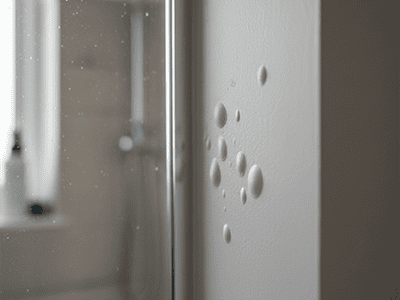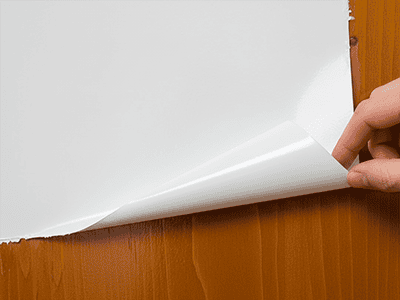Why is My Paint Peeling or Bubbling?
Common Causes and How to Fix Them for Good
There's nothing more frustrating than stepping back to admire your hard work, only to see it start to bubble, flake, or peel away just weeks or months later. Paint failure is a common DIY problem, and it's almost never the fault of the paint itself. The issue almost always lies with what’s happening underneath. Understanding the cause of the problem is the first and most critical step to fixing it permanently. Simply scraping off the loose bits and painting over the top is a guarantee that the problem will return.
The #1 Culprit: Trapped Moisture
Paint is designed to be a breathable film, but it cannot handle constant moisture trying to push its way out from behind. This is the leading cause of bubbling and blistering, particularly in Australian homes.

- High Humidity Areas: Bathrooms and laundries are prime suspects. If the ventilation is poor, steam and condensation soak into the wall, and the moisture then pushes the paint film off the surface, creating bubbles.
- Leaking Gutters or Roofs: On exterior walls or ceilings, peeling or blistering is a major red flag for a water leak. Look for a corresponding issue on the outside of your home, like a blocked gutter or a cracked roof tile, that is allowing water to get into the wall cavity. -
- Rising Damp: Peeling or bubbling paint low down on ground-floor walls can be a sign of rising damp, where moisture is wicking up from the ground. This is a more serious structural issue that needs to be addressed by a professional.
The Other Common Cause: Poor Preparation
Paint needs two things to last: a clean surface and a stable surface. If either of these is compromised, the paint has nothing to properly bond to, and it will eventually fail and peel off in sheets.

- Painting Over Dirty or Greasy Walls: This is common in kitchens. If the wall wasn't thoroughly cleaned with Sugar Soap before painting, the paint has stuck to the grease, not the wall. Eventually, the bond fails.
- Painting Over Un-sanded Glossy Surfaces: Old-school oil-based enamel on trim and doors is a classic example. If the slick, glossy surface wasn't sanded to a dull finish, the new paint has no "key" to grip onto and can often be peeled off with a fingernail.
- Painting Over Unprimed Surfaces: Trying to paint directly over bare timber or unsealed gyprock filler without a primer will often lead to peeling. The porous surface sucks the binders out of the paint, leaving a weak, powdery film.
- Cheap Paint: While less common, using a low-quality paint can be a factor. Cheaper paints contain fewer of the high-quality binders and resins that provide flexibility and adhesion, making them more prone to cracking and peeling over time.
The Permanent Fix: A Step-by-Step Guide
You cannot simply paint over the problem. You must remove the cause and start again.
- Identify and Fix the Source: First, solve the underlying issue. Fix the leaking gutter, improve the bathroom ventilation with a better exhaust fan, or commit to a proper cleaning and sanding routine.
- Scrape and Remove All Failed Paint: Use a sharp paint scraper to remove every last bit of the bubbling, flaking, or peeling paint. You must get back to a solid, stable edge where the paint is firmly attached.
- Feather the Edges: Use a medium-grit sandpaper (120-grit) to sand the edges of the remaining sound paint. This creates a smooth, tapered transition from the bare patch to the old paint, which will prevent the repair from being visible later.
- Prime the Area: This is a non-negotiable step. Apply a coat of a suitable primer to the bare, exposed area. Use a stain-blocking primer if moisture was the cause, or a good quality sealer/undercoat for other issues.
- Repaint: Once the primer is dry, you can apply two topcoats of your chosen colour, feathering it into the surrounding area for a seamless repair.
Pro Tip from a Sydney Painter
Diagnosing the root cause of paint failure is a key part of our job. We can quickly identify whether the problem is a structural moisture issue or a result of poor surface preparation. Simply painting over a problem is something a professional would never do. At DRJ Painting, we provide long-term solutions, not temporary fixes, ensuring every surface is sound, stable, and correctly prepared before we apply the final finish.

